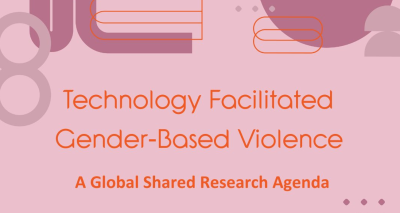
Online violence against women is an overt expression of the gender discrimination and inequality that exists offline. Online, it becomes amplified.
(Jac sm Kee)
Since 2005, APC been working to strengthen the capacity of women’s rights activists and organisations to use technology tools in their work to end violence against women and to respond to the growing incidence of technology-related violence against women (VAW). The most common cases documented were cyberstalking, sexual harassment, surveillance and the unauthorised use and manipulation of personal information including images and videos. We found that while these violations are increasing, women and girls who fall victim do not know what to do to stop the abuse, what charges they can report, who they should report to, and what help they can get. In many countries, policies, regulations or services that respond to these new forms of violence do not exist or are inadequate.
Preventing technology-related VAW is an important component in ending violence against women today and contributes to creating a safe and secure environment for women and girls in every sphere of life.
From 2012 to 2014, the APC community will build on the collective experience and successes of its previous work on technology and violence against women through support from the Dutch Ministry of Foreign Affair’s (DGIS) Funding Leadership and Opportunities for Women (FLOW) Fund. Our project “End violence: Women’s rights and safety online” will build on APC’s trajectory in the anti-VAW struggle and existing partnerships to enhance women’s safety and security by preventing the growing violence against women through ICTs.
How will we do it?
The project is being implemented in seven countries through a combination of strategies that contribute towards ending violence against women through building women’s leadership and ensuring women’s rights and safety online. Our strategies include:
1. Gathering evidence by documenting, reporting, monitoring and analysing technology-related violence against women. Visit the country maps to see how we are doing it.
- Overall aggregated map
- Bosnia Herzegovina
- Colombia
- Democratic Republic of Congo
- Kenya
- Pakistan
- Philippines
2. Building women’s leadership to engage with national policy makers, judges, lawyers and other key actors in identifying remedies that may be available in current laws and regulations and, where needed, developing new policies that seek to protect women’s rights including their safety and security.
3. Building women’s ability to influence internet and telecommunications businesses such as social networking platforms, web hosting companies and mobile phone operators to develop corporate user policies and practices that respect women’s rights. This includes the adequate representation of women in policy-making and standards-setting processes and ensuring that policies and standards consider the safety and security of users.
4. Campaigning to create an online environment and culture that affirms everyone’s right to safety and security. Such an online culture would not tolerate behaviour and practices that are harmful and violent to women and girls. It will include targeted solidarity actions and engage young people.
5. Strengthening the institutional capacity of women’s rights organisations to become leaders in addressing technology-related VAW through change in their own organisational practice.
What countries are involved?
The programme’s activities will be carried out with our partners in the following countries:
- Bosnia and Herzegovina (OneWorld Platform)
- Colombia (Colnodo)
- Democratic Republic of the Congo (Si Jeunesse Savait)
- Kenya (KICTANet and the International Association of Women in Radio and Television)
- Mexico
- Philippines (Foundation for Media Alternatives)
- Pakistan (Bytes for All)
Who will benefit?
The project targets women leaders – leaders of women’s rights organisations, women in the technology industry, community leaders, young women peer leaders and opinion makers – as well as women’s rights organisations that are already active in implementing interventions and advocacy strategies to address violence against women and defend women’s rights.
Project outcomes
- A reliable and effective system of reporting and evidence collection in seven countries that strengthens leadership of women to address technology-related VAW.
- Remedies and policies that address technology-related VAW are developed through research and advocacy by women leaders and women’s rights organisations.
- Women leaders are effectively engaging the private sector (social networking providers, web hosting companies and mobile phone companies), in partnership with other expert NGOs, to develop corporate user policies that protect the safety and security of women and girls.
- Women and girls are leading campaigns to mobilise users to create an online culture that does not tolerate online behaviour that is harmful and violent to women and girls.
- Institutional capacity of women’s rights organisations to address technology-related VAW is strengthened in a sustainable way.
Visit the online platform featuring the main findings of the research "From impunity to justice: Exploring corporate and legal remedies for technology-related violence against women"
More related information:
- All the project's policy advocacy-related reports are available here.
- Related articles in GenderIT.org.







